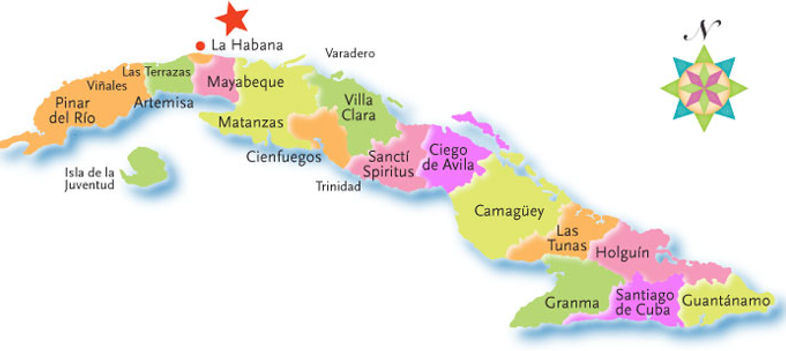
Describe your image

Describe your image

Describe your image
EXPLORE HAVANA
Cuba’s largest city and capital, Havana, is one of the most beautiful and historically significant cities in the entire Caribbean. Established in the 16th century by Spanish conquistadors, the town served as the launching point to Spain from the New World. As such, Havana became a port exposed to a wide variety of cultures, from Spanish to African, as well as a variety of indigenous American populations.
Due to its strategic location, Havana was prone to numerous attacks throughout its history from European nations like Great Britain as well as by free roaming pirates. For this reason, the Spanish erected a massive fortress on the north shores of Canal de Entrada, which leads into the city’s port. La Cabana was completed in 1774 and became a vital defensive barrier that enabled Havana to grow and prosper for centuries. La Cabana was also an important location for the Cuban revolution of the 20th century; Fidel Castro and Che Guevara used it as a military headquarters and prison. Today, it stands as a testament to the city, and it together with other nearby fortresses has been retrofitted as a museum.
Within Havana itself, Cuban visitors find a magnificent city rich with culture and history. For much of the past two centuries as Cuba prospered from the sugar industry, a large part of the country’s wealth was concentrated throughout Havana resulting in amazing buildings, such as the Gran Teatro de La Havana. Built early in the 20th century, the theater houses the Cuban National Ballet and many musical concerts.
Other impressive locations in Havana from the same period are the Museum of the Revolution, the Museo Nacional de Bellas Artes de La Habana (Havana Museum of Fine Arts), and El Capitolio, the nation’s capital building. Built in the style of neo-classical architecture, Havana’s best sites resonate with culture and beauty, highlighting any Cuban tour.
But in a place so full of history, there are many older locations, too. The Havana Cathedral is of Baroque architecture and was completed in 1777. As a glorious place of worship for the primary Catholic faith of the period, the church is full of ornate paintings and frescoes, making it a delight to visit.
Old Havana is the historical center of the city where Cuban visitors can find many of these prominent locations. Many Cuba private guides take travelers on Malecon walks, a stroll along the Embarcadero on water’s edge, set against the romantic backdrop of Old Havana. In our view the Malecon stroll is a “must-do” Cuba travel experience.
Cuba’s diverse culture oozes throughout Havana’s streets, and provides visitors with great ethnic restaurants, shopping, and magnificent plazas, each with its own story. Havana’s Central and Vedado districts are interesting and safe residential and business walking areas, including the buildings of the University of Havana. Cuba Travel Adventures Group small group custom tours feature an overview of the massive restoration projects underway in Old Havana bringing Colonial buildings back to life through visits to Camara Oscura (Dark Camera) for a bird’s-eye view, and to La Maqueta de la Habana Vieja, a 1:500 very exacting and authentic scale model of the Old City. For more information, contact cubatravelgroup@gmail.com.




.jpg)

